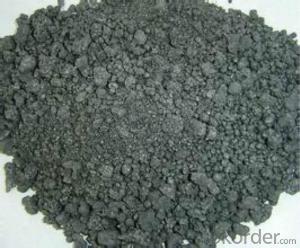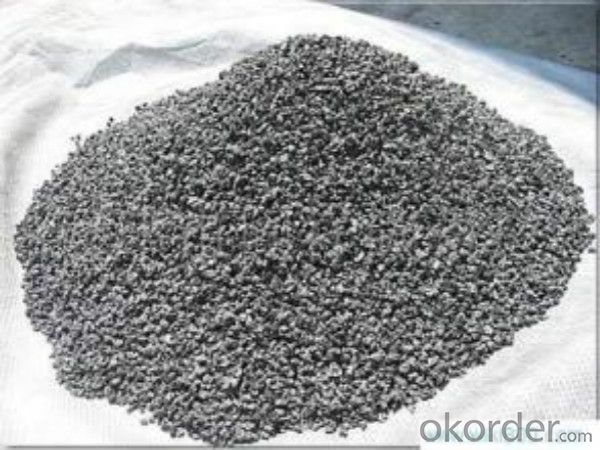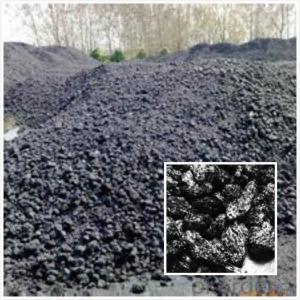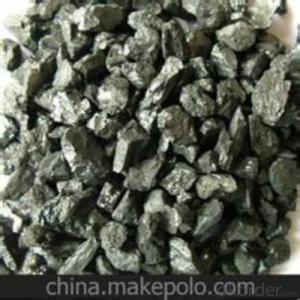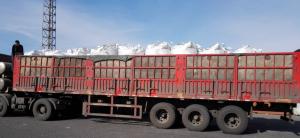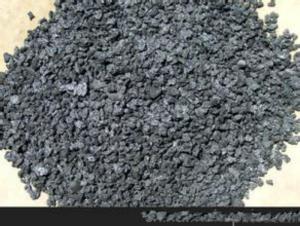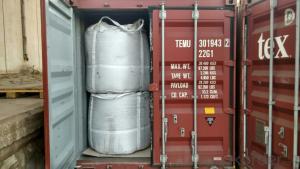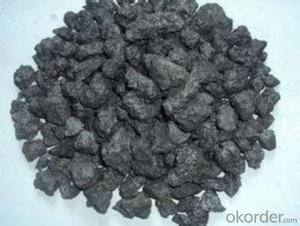Low S Calciend Petroleum Coke as Carbon additive
- Loading Port:
- Tianjin
- Payment Terms:
- TT OR LC
- Min Order Qty:
- 20.6
- Supply Capability:
- 2060 m.t./month
OKorder Service Pledge
OKorder Financial Service
You Might Also Like
Brief introduction
Calcined Petroleum Coke comes from delayed coke which extracted from oil refinery. Although Calcined Petroleum Coke contains a little bit higher level of sulfur and nitrogen than pitch coke, the price advantage still makes it widely used during steel-making and founding as a kind of carbon additive/carburant.
BaoSteel is world famous organization. This calcined petroleum coke's raw material is from Bao Steel, which has great quality guarantee. Bao Steel also named this coke as Pitch Coke.
Features
Our product has follwing advantages:
The morphology, chemistry and crystallinity of recarburisers
have a major impact on the overall casting cost. It is playing more and more important role in the industry.
The combined
application and cost benefits, which are derived through the
use of Desulco, enable foundries to manufacture castings in a
highly cost effective manner.
reduces
Recarburiser consumption
Power consumption
Inoculant consumption
MgFeSi consumption
Furnace refractory wear
Tap to tap time
Slag inclusions risk
Chill
increases
Casting microstructure
Productivity
Process consistency
Specifications
Products | CPC | ||
F.C.% | 98.5MIN | 98.5MIN | 98MIN |
ASH % | 0.8MAX | 0.8MAX | 1MAX |
V.M.% | 0.7 MAX | 0.7 MAX | 1 MAX |
SULFUR % | 0. 5MAX | 0. 7MAX | 1MAX |
MOISTURE % | 0.5MAX | 0.5MAX | 1MAX |
Pictures
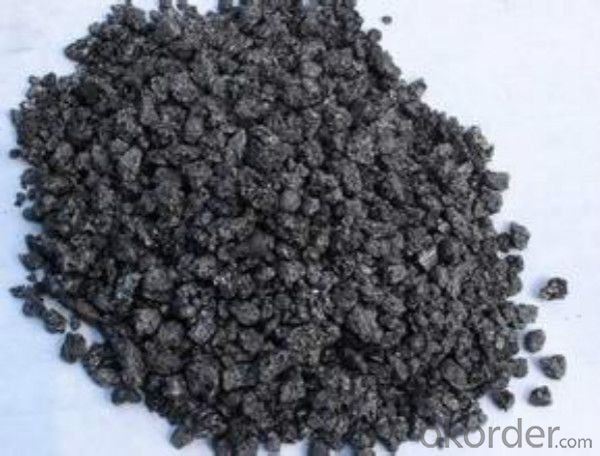
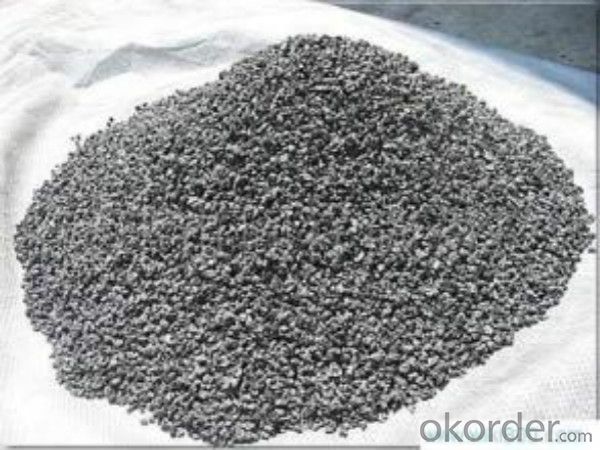
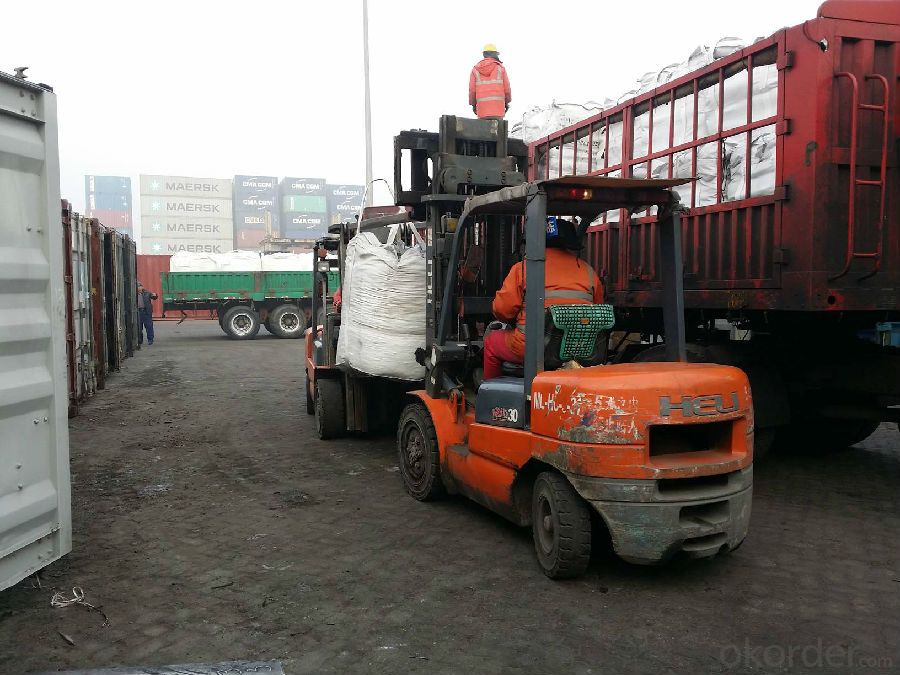
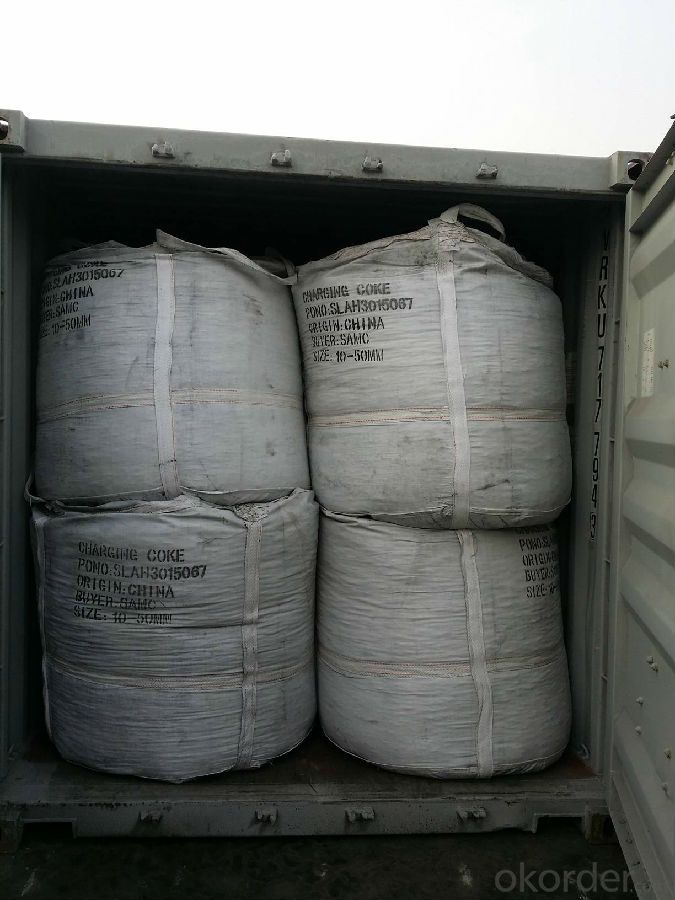
FAQ
1 What is the package?
In jumbo bag with/without pallet
2 What is the delivery time?
25 days after receiving the workable LC or down payment
3 What is the payment term?
T/T, L/C,D/P,D/A
- Q: What is the carbon content of different types of household waste?
- The carbon content of different types of household waste can vary depending on the specific materials being discarded. Generally, organic waste such as food scraps, yard waste, and paper products tend to have a higher carbon content compared to inorganic waste like glass, plastics, and metals. Food waste is primarily composed of organic materials and has a high carbon content. It typically ranges from 50 to 70 percent carbon content. This is because food is derived from plants and animals, which contain carbohydrates, proteins, and fats that are rich in carbon. Yard waste, such as grass clippings, leaves, and branches, also has a substantial carbon content. It contains plant matter that is predominantly made up of cellulose and lignin, which are carbon-based compounds. The carbon content of yard waste can vary depending on the type of vegetation, but it generally falls within the range of 40 to 60 percent. Paper products, such as newspapers, cardboard, and office paper, are primarily made from wood pulp. Wood is composed of cellulose, hemicellulose, and lignin, all of which contain carbon. As a result, paper waste has a significant carbon content, typically ranging from 40 to 60 percent. On the other hand, inorganic waste materials like glass, plastics, and metals have minimal carbon content. These materials are primarily derived from non-renewable resources such as minerals and fossil fuels, which are low in carbon content. Therefore, their carbon content is negligible or close to zero. It is important to note that while organic waste contains higher carbon content, it also has the potential to be composted or converted into biogas through anaerobic digestion, thereby contributing to carbon sequestration or renewable energy generation. In contrast, inorganic waste materials like plastics and metals are non-biodegradable and can have detrimental environmental impacts if not properly managed.
- Q: What is carbon black pigment?
- Carbon black pigment, used predominantly as a coloring agent in various applications, is a finely divided form of carbon. It is derived from the incomplete combustion or thermal decomposition of hydrocarbons like coal tar, petroleum, or natural gas, resulting in the formation of extremely small particles with a high surface area. Renowned for its intense black color, high tinting strength, and excellent UV stability, carbon black pigment finds extensive use in the manufacture of inks, paints, coatings, plastics, rubber, and other materials. The particles disperse effectively in these mediums, ensuring a deep and uniform black hue. Apart from its coloring prowess, carbon black pigment boasts several other desirable attributes. It enhances the durability, weather resistance, and electrical conductivity of materials. Additionally, it augments the UV resistance and absorption properties of coatings and plastics, thereby safeguarding against fading and degradation caused by sunlight exposure. Furthermore, carbon black pigment exhibits chemical inertness, rendering it suitable for a wide range of applications without triggering undesirable chemical reactions. It is also non-toxic and has a minimal environmental footprint, making it a preferred choice across multiple industries. In summary, carbon black pigment serves as a versatile and highly utilized additive that imparts deep black coloration, durability, and improved performance to various materials. Its exceptional properties make it an indispensable component in numerous industries, contributing to the production of high-quality products.
- Q: How does carbon impact the prevalence of droughts?
- Carbon impacts the prevalence of droughts by contributing to climate change. Increased levels of carbon dioxide in the atmosphere trap heat and lead to rising global temperatures. This enhanced greenhouse effect alters weather patterns and increases the frequency and severity of droughts in many regions around the world.
- Q: How does carbon contribute to the color of gemstones?
- Gemstone color is influenced by carbon, a vital element. Carbon's presence in a gemstone's crystal lattice structure allows it to absorb specific light wavelengths and reflect others, resulting in its distinct color. The arrangement of carbon atoms within the gemstone's structure can excite electrons, leading to the absorption of certain colors of light. This absorption process determines the gemstone's color, as the remaining wavelengths are reflected back to our eyes. For instance, diamonds can exhibit color variations, ranging from colorless to yellow or even fancy shades like blue or pink, due to the presence of nitrogen impurities. Similarly, in gemstones like rubies and sapphires, traces of carbon produce a spectrum of colors, spanning from red to blue, depending on the concentration and arrangement of these carbon impurities. Thus, carbon plays a vital role in the color and visual appeal of diverse gemstones.
- Q: How long will it last? 10National Day would like to do carbon baking ribs at home, how to do, how to marinate? For how long?.. Don't copy sticky posts. Now, tour TV's "eating meat" on earth is recorded in a grilled pork chop, wondering how that is done
- Drain the spareribs until it is dryThis can save you a lot of timeMarinate it for only about fifteen minutes with gingerIf it's thawed, pour some white wineThen mix it with salt and drain the oilFinally, dressed with bamboo ribsWhen baking, brush some oil and turn it several times halfwayThen you can use barbecue sauce when it's readyIf you don't need barbecue sauce, then mix it with salt and monosodium glutamate, and brushFinally sprinkle five spice powder, chili powder and cumin powderFinally, sprinkle chopped green onionThe time is about 8 minutesHowever, oil, not prepared in advanceAt least 30 minutes
- Q: Stability, primary carbon, two carbon, three carbon, four carbon
- (2) due to free radicals generated in the outer layer of only 7 electrons, eight corner structure did not reach saturation, so it is an electron deficient species, while methyl (or alkyl) is an electron donor groups can alleviate the lack of this kind of electron, so that the stable free radicals, free radicals and carbon alkyl substituents on the more, the more stable free radical. And more stable, more easy to generate.
- Q: What are the applications of carbon nanowires?
- Due to their unique properties and characteristics, carbon nanowires find wide-ranging applications across various fields. Some of the main uses of carbon nanowires include: 1. Electronics: Carbon nanowires serve as conducting channels in electronic devices like transistors and interconnects. Their small size, high electrical conductivity, and ability to handle high current densities make them ideal for nanoelectronics. 2. Energy storage: Carbon nanowires prove useful in energy storage devices such as batteries and supercapacitors. Their excellent electrical conductivity and high surface area enable efficient charge and energy storage, leading to enhanced performance and longer lifespan. 3. Sensors: Carbon nanowires function as sensing elements in different types of sensors. Their high sensitivity to temperature, pressure, or gas concentration changes makes them suitable for applications in environmental monitoring, healthcare, and industrial sensing. 4. Biomedical applications: Carbon nanowires hold promise in biomedical applications, including drug delivery systems and tissue engineering. They can be modified with specific molecules to target and deliver drugs to particular cells or tissues. Additionally, their biocompatibility and high mechanical strength make them suitable for scaffolds in tissue engineering. 5. Nanoelectromechanical systems (NEMS): Carbon nanowires contribute to the construction of NEMS devices, which are miniature mechanical systems operating at the nanoscale. These devices find applications in sensing, actuation, and data storage, and carbon nanowires possess the necessary mechanical and electrical properties for their operation. 6. Nanocomposites: Carbon nanowires are capable of enhancing the mechanical, electrical, and thermal properties of various materials. They can reinforce polymers, ceramics, and metals, resulting in improved strength, conductivity, and heat dissipation in the resulting nanocomposites. 7. Optoelectronics: Carbon nanowires find utility in optoelectronic devices like photodetectors and light-emitting diodes (LEDs). Their ability to emit light, low electrical resistance, and high electron mobility make them suitable for applications in displays, lighting, and optical communications. In conclusion, the applications of carbon nanowires are diverse and expanding, with the potential to revolutionize fields such as electronics, energy storage, sensing, biomedicine, and more. Ongoing research and development in this field are expected to uncover even more exciting applications in the future.
- Q: How to extinguish the charcoal fire?
- The best way is to destroy the charcoal with residual charcoal poured into the water to save half of Tietong full out dry can be reused
- Q: How to test aldehyde group and carbon carbon double bond in acrolein
- then the bromine test double bonds, because the aldehyde will affect the bond detection, and will not affect the detection of double bond of carboxyl.
- Q: How does carbon impact the availability of clean air?
- The availability of clean air is impacted by carbon, which contributes to air pollution and climate change. Burning carbon-based fuels like coal, oil, and natural gas for energy production releases carbon dioxide (CO2) into the atmosphere. CO2 is a greenhouse gas that traps heat in the Earth's atmosphere, causing the planet to warm up and leading to climate change. Air quality is affected by climate change in various ways. Increasing temperatures can raise the frequency and intensity of wildfires, which release significant amounts of carbon dioxide and other pollutants into the air. Moreover, higher temperatures can worsen the formation of ground-level ozone, a harmful air pollutant that can trigger respiratory problems and other health issues. Furthermore, carbon emissions contribute to the creation of particulate matter, including soot and fine particles, which can be harmful when breathed in. These particles originate from the combustion of fossil fuels in vehicles, power plants, and industrial processes. Inhaling particulate matter can result in respiratory and cardiovascular problems, particularly affecting vulnerable populations such as children, the elderly, and individuals with pre-existing respiratory conditions. To improve air quality and ensure the availability of clean air, it is crucial to reduce carbon emissions. This can be achieved by transitioning to renewable energy sources, enhancing energy efficiency, and implementing policies to decrease carbon emissions. Additionally, promoting sustainable transportation, reducing deforestation, and adopting cleaner industrial practices can contribute to cleaner air by reducing carbon emissions and other pollutants.
Send your message to us
Low S Calciend Petroleum Coke as Carbon additive
- Loading Port:
- Tianjin
- Payment Terms:
- TT OR LC
- Min Order Qty:
- 20.6
- Supply Capability:
- 2060 m.t./month
OKorder Service Pledge
OKorder Financial Service
Similar products
Hot products
Hot Searches
